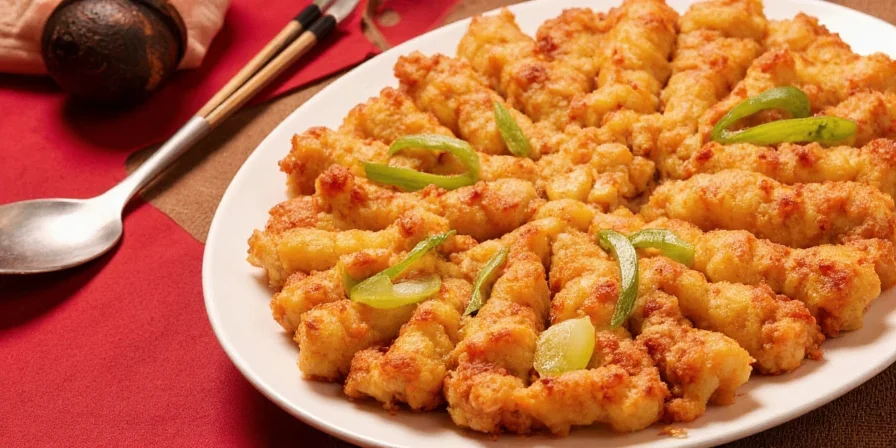Ground mustard is a versatile spice that adds tangy flavor to sauces, marinades, and rubs. Unlike pre-made mustard, ground mustard powder requires activation with liquid to develop its signature heat and aroma. Most home cooks make a critical mistake: adding it directly to recipes without proper activation, resulting in bitter or flat flavors. This guide shows exactly how to use ground mustard properly for maximum flavor in everyday cooking.
Unlike mustard seeds, ground mustard works instantly but loses potency quickly. The secret? Understanding the 3-8 minute activation window where flavor peaks before degrading. We'll cover practical techniques you can use today, from simple substitutions to professional flavor-boosting methods - no food science degree required.
Table of Contents
- Ground Mustard Basics: What It Is & How It Works
- 10 Practical Uses for Ground Mustard (With Measurements)
- Ground Mustard vs Mustard Seeds: When to Use Which
- The Right Way to Activate Ground Mustard
- Storage Tips to Prevent Bitterness
- 3 Simple Recipes That Shine With Ground Mustard
- Pro Tips: Advanced Flavor Control Techniques
Ground Mustard Basics: What It Is & How It Works
Ground mustard comes from pulverized mustard seeds (yellow, brown, or black). Unlike ready-made mustard, it's inactive until mixed with liquid. When moisture hits the powder, enzymes react with compounds in the seeds to create that familiar sharp, pungent flavor. This reaction peaks in 3-8 minutes, then gradually fades - explaining why many recipes miss the flavor window.

Why Ground Mustard Works Better Than Seeds in Some Recipes
- Instant flavor: Works immediately (seeds take 15+ minutes to activate)
- Better for cold applications: Perfect for mayo, dressings, and cold marinades
- Easier to measure precisely: More consistent results than grinding seeds
10 Practical Uses for Ground Mustard (With Measurements)
Stop guessing with these tested ratios for common home cooking situations:
- Marinades: 1 tsp per cup of liquid (works best with citrus juice)
- Dry rubs: 2% of total rub weight (prevents bitterness)
- Barbecue sauce: 1.5 tsp per cup (add after cooking)
- Deviled eggs: 1/4 tsp per 6 eggs (mix with yolk filling)
- Homemade mayo: 1/2 tsp per cup (replaces 1 tbsp prepared mustard)
- Grilled cheese: Pinch inside sandwich before cooking
- Roasted vegetables: 1/2 tsp with oil per sheet pan
- Meatloaf: 1 tsp per pound of meat
- Pickling: 1/2 tsp per cup of brine (add after boiling)
- Salad dressing: 3/4 tsp per 1/4 cup dressing

Ground Mustard vs Mustard Seeds: When to Use Which
| Best For | Ground Mustard | Mustard Seeds |
|---|---|---|
| Time-sensitive recipes | ✓ Immediate flavor | ✗ Needs activation time |
| Cold applications | ✓ Works in cold liquids | ✗ Requires warm liquid |
| Long-cooked dishes | ✗ Loses potency | ✓ Gradual flavor release |
| Pickling | ✓ Consistent flavor | ✓ Texture plus flavor |
| Measuring precision | ✓ Exact amounts | ✗ Varies by seed size |

The Right Way to Activate Ground Mustard
Follow these simple steps for perfect flavor every time:
- Choose your liquid: Water works, but acidic liquids (vinegar, lemon juice) create brighter flavor
- Mix ratio: 1 part mustard to 2 parts liquid (thicker paste = stronger heat)
- Wait time: Let sit 5-7 minutes at room temperature (this is critical!)
- Adjust: Add more liquid if too thick, more mustard if not pungent enough
- Use immediately: Flavor peaks at 8 minutes, then gradually fades
Troubleshooting Common Problems
- Bitter taste: You added it too late in cooking or used hot liquid
- No heat: Liquid was too hot (over 140°F/60°C) which kills the enzymes
- Flavor disappeared: You waited too long before using (beyond 12 minutes)

Storage Tips to Prevent Bitterness
Ground mustard loses potency faster than whole seeds. Follow these storage methods:
- Air-tight container: Glass jars with tight seals work best (plastic can absorb flavors)
- Cool, dark place: Pantry is fine for 6 months; refrigerator extends to 12 months
- No moisture: Never store near sink or dishwasher (humidity ruins potency)
- Test freshness: Mix 1/4 tsp with 1/2 tsp water - should develop sharp aroma in 3 minutes
Discard if it smells musty or shows no heat development when tested. Properly stored, ground mustard maintains flavor for 6-12 months (versus 2-3 years for whole seeds).

3 Simple Recipes That Shine With Ground Mustard
Perfect Honey Mustard Dressing (5 minutes)
Mix: 1/4 cup mayo, 2 tbsp honey, 1 tsp ground mustard, 1 tbsp apple cider vinegar, salt to taste. Let sit 5 minutes before serving. The ground mustard cuts the sweetness perfectly without overpowering.
Weeknight Pork Chop Marinade
Whisk: 1/4 cup olive oil, 2 tbsp lemon juice, 1 tsp ground mustard, 1 minced garlic clove, salt and pepper. Marinate chops 30 minutes (no longer - the acid will start to "cook" the meat). Grill for juicy, flavorful results.
Game-Day Chicken Wings
Toss cooked wings in: 1/4 cup melted butter, 2 tbsp hot sauce, 1 tsp ground mustard. The mustard adds complexity that balances the heat and makes people ask for your secret.
Pro Tips: Advanced Flavor Control Techniques
Once you've mastered the basics, try these professional methods:
- Temperature control: For milder flavor, use cold liquid (below 60°F/15°C). For stronger heat, use warm liquid (100-120°F/38-49°C)
- Acid selection: Vinegar gives sharp heat; citrus creates brighter flavor; yogurt produces milder, rounded notes
- Deactivation trick: After 8 minutes of activation, microwave for 15 seconds to stop the reaction while preserving flavor
- Flavor pairing: Works exceptionally well with smoked paprika, garlic, honey, and beer
- Preservation boost: Add a pinch of rosemary extract to double shelf life of prepared mustard

Frequently Asked Questions
Can I substitute ground mustard for prepared mustard?
Yes, but with adjustments. Use 1 teaspoon ground mustard plus 1 tablespoon liquid (water, vinegar, or lemon juice) to replace 1 tablespoon prepared mustard. Let the mixture sit 5-7 minutes to activate before using. This works well in dressings, sauces, and marinades but not for sandwiches where you want the texture of prepared mustard.
Why does my ground mustard taste bitter?
Bitterness happens when ground mustard is exposed to high heat (above 140°F/60°C) which destroys the enzymes needed for proper flavor development. It also occurs when added too late in cooking or when not given enough time to activate before heating. Always activate ground mustard with cold or room-temperature liquid first, wait 5-7 minutes, then add to your recipe.
How much ground mustard equals one mustard seed?
Approximately 1/8 teaspoon ground mustard equals 1 teaspoon mustard seeds by volume. However, for best results, don't directly substitute - ground mustard works immediately while seeds need time to activate. For cold applications, use ground mustard; for long-cooked dishes, use seeds.
Does ground mustard go bad?
Ground mustard loses potency over time but doesn't spoil. Properly stored in an airtight container away from light and moisture, it maintains good flavor for 6-12 months. Test freshness by mixing 1/4 teaspoon with 1/2 teaspoon water - if it develops sharp aroma within 3 minutes, it's still good. If no heat develops, it's time to replace.
What's the best liquid to activate ground mustard?
Acidic liquids work best: white wine vinegar, apple cider vinegar, or lemon juice create the brightest flavor. Water works but produces milder results. Avoid dairy liquids for activation as they neutralize the enzymes. For barbecue sauces, use beer or vinegar; for dressings, use citrus juice; for marinades, use wine or vinegar.











 浙公网安备
33010002000092号
浙公网安备
33010002000092号 浙B2-20120091-4
浙B2-20120091-4